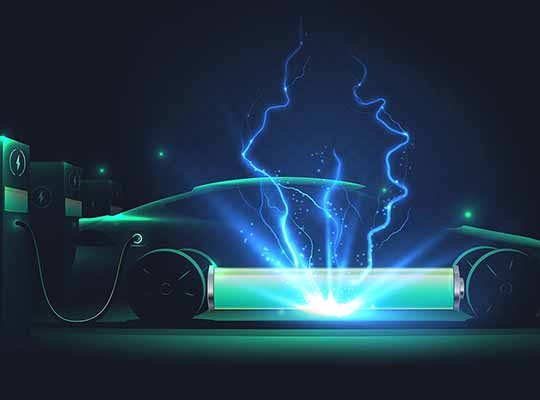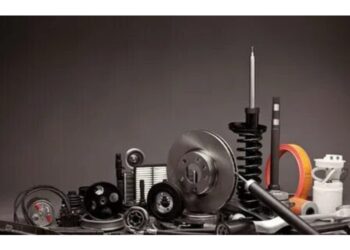Tackling the growing concern of environmental protection as well as deleting conventional fuel sources efforts are being made to move away from conventional internal combustion engine based vehicles to electric or hybrid electric in their different models. An electric vehicle runs exclusively on electric energy stored in a battery. There are some disadvantages with electric vehicles like shorter range, time taking recharging of the battery and cost. Well versed with internal combustion engine technology, now people are looking for a combination of both electric and internal combustion engine technologies towards a hybrid-electric vehicle. Hybrid-electric vehicles draw power from an internal combustion engine (petrol engine) and at least one electric motor. The hybrid vehicle will run on a combination of electricity and conventional fuel as its system recaptures energy via regenerative braking. A hybrid vehicle runs on twin powered engine (gasoline engine and electric motor) can cut fuel consumption and conserve energy. The biggest advantage of a hybrid vehicle over a gasoline-powered and electric vehicle is that it runs cleaner and has better gas mileage which make it not only environmental friendly but also economically viable. The basic differences between electric and hybrid-electric vehicles are summarized as:
| Specifications | Electric | Hybrid-electric |
| Power/Fuel Source | Electricity through battery pack (DC) | Electricity and fossil fuel (Petrol and Diesel) |
| Engine | Electric Motor(s) | Internal Combustion Engine (ICE) and Electric Motor(s) |
| Fuel Efficiency | Depends on battery range | Combination of ICE and Battery Range |
| Emission Levels | Lower compared to ICE and Hybrid vehicles | Higher compared to electric vehicles |
| Price Range | High | Similar to conventional ICE vehicles |
| Charging | Needed | Not Needed |

- Though, the development and marketing of hybrid vehicles goes back to 1800s but due to high cost their popularity in the market remains low. But vehicle manufacturers continued their research and development with newer hybrid technology to comply with emission norms and cost. Hybrid vehicles are powered by two engines: one based on petrol based on and other one using electricity and both the engines work with each other to spin the wheels. This leads to lesser petrol being burned and therefore better fuel efficiency. When compared to conventional vehicles, hybrids offer better power and fuel efficiency as they combine the benefits of high fuel efficiency and low emissions. When hybrid vehicles are moving or while braking, the result is excess power which can be used to charge the batteries. This, in turn, aids higher fuel efficiency or range. The main components of a hybrid-electric vehicle are:
- Internal Combustion Engine: In a regular petrol engine, fuel is injected into the internal combustion chamber. Here, fuel mixes with air and is ignited by a spark plug.
- Electric Traction Motor: This motor draws power from the battery pack and sends power to the wheels.
- Electric Generator: This type of motor generates electricity from the regenerating energy while braking, which recharges the battery pack. Some electric generators act as both drive and regenerative functions.
- Traction Battery Pack: The pack stores electricity to power the electric motors and it also recharges through the electric generator.
- Types of Hybrid vehicles
Automobile companies use different hybrid designs to either achieve maximum fuel efficiency or to keep the vehicle prices as low as possible. Below are the different types of hybrid cars:
- Parallel Hybrid: This is the most popular or common hybrid design which combines both electric and internal combustion engines to power the vehicle. They can run together or can be used as the primary power source while the other kicks in when extra power is required. Both power sources are parallel connected to the gearbox or the transmission. An example of Parallel Hybrid Cars is the Toyota Camry, Honda Accord, Toyota Prius, Hyundai Sonata, etc.
- Series Hybrid: Series Hybrid also employs both the petrol internal combustion engine as well as the electric motor. However, the internal combustion engine does not propel the vehicle, instead it generates electricity to recharge the battery pack. The battery pack in turn powers the electric motor(s) which in turn sends power to the wheels. An example of a Series Hybrid car is the BMW i3, Kia Optima, Ford Fusion, Chevrolet Volt, etc.
- Plug-in Hybrid: The Plug-in Hybrid elevates the conventional hybrid vehicle with a much larger battery pack that requires to be charged. Generally, it uses a 110-volt electrical socket to charge the battery pack similar to an electric car. Since the Plug-in Hybrid car does depend on an internal combustion engine and can be run after it is fully charged, there is substantial improvement in the vehicle’s fuel efficiency. An example of a plug-in hybrid car is the BMW 330e, Hyundai Ioniq Plug-in Hybrid, Volvo XC40 Recharge Plug-in Hybrid, etc.
- Two-Mode Hybrid: This type of hybrid design operates in two different ways. While on the first mode, it works just like a regular hybrid card, in the second mode, the design can adjust to different requirements by the engine to meet specific vehicle tasks.
- Mild-Hybrid: Mild-hybrid designs have been adopted by companies to adhere to emission norms as well as to slightly improve fuel efficiency without increasing the cost considerably. In this type of hybrid, the electric motor assists the petrol engine in increasing fuel efficiency, improving performance or both. Additionally, it acts as a starter for the automatic start/stop function, which switches off the engine when the vehicle comes to rest and thereby reduces the use of fuel. An example of mild-hybrid cars includes Maruti Suzuki Ertiga, Ciaz, Baleno, etc.
Some drawbacks of a hybrid-electric vehicle
Hybrid vehicles are now more popular than conventional vehicles due to lower lifetime operating cost and environmental impact. Mainstream manufacturers are rushing to market hybrid and new electric vehicles because of growing market demand. However, hybrid-electric vehicles do have some of the following disadvantages which have to be overcome to make them more user friendly.
- Acceleration in hybrid vehicles is generally very poor, even if they are capable of a reasonable top speed.
- Hybrid vehicles are often less powerful than gasoline powered engine and more suited for city driving.
- Hybrid vehicles are comparatively expensive than a regular petrol vehicle but that extra amount can be offset with lower running cost.
- The batteries used in hybrid electric vehicles degenerate faster than in the electric vehicle alone and needs early replacement.
- Weight of hybrid vehicle is higher due to a gasoline powered engine, a lighter electric motor and a pack of powerful batteries.
- Hybrid drivers may also commonly encounter issues with leak or failures of the evaporative emissions system.
- The presence of dual engine, continuous improvement in technology led to higher maintenance cost and difficult to get good mechanics to repair the vehicle.
In case of an accident, the high voltage present inside the batteries can prove lethal for passenger.













